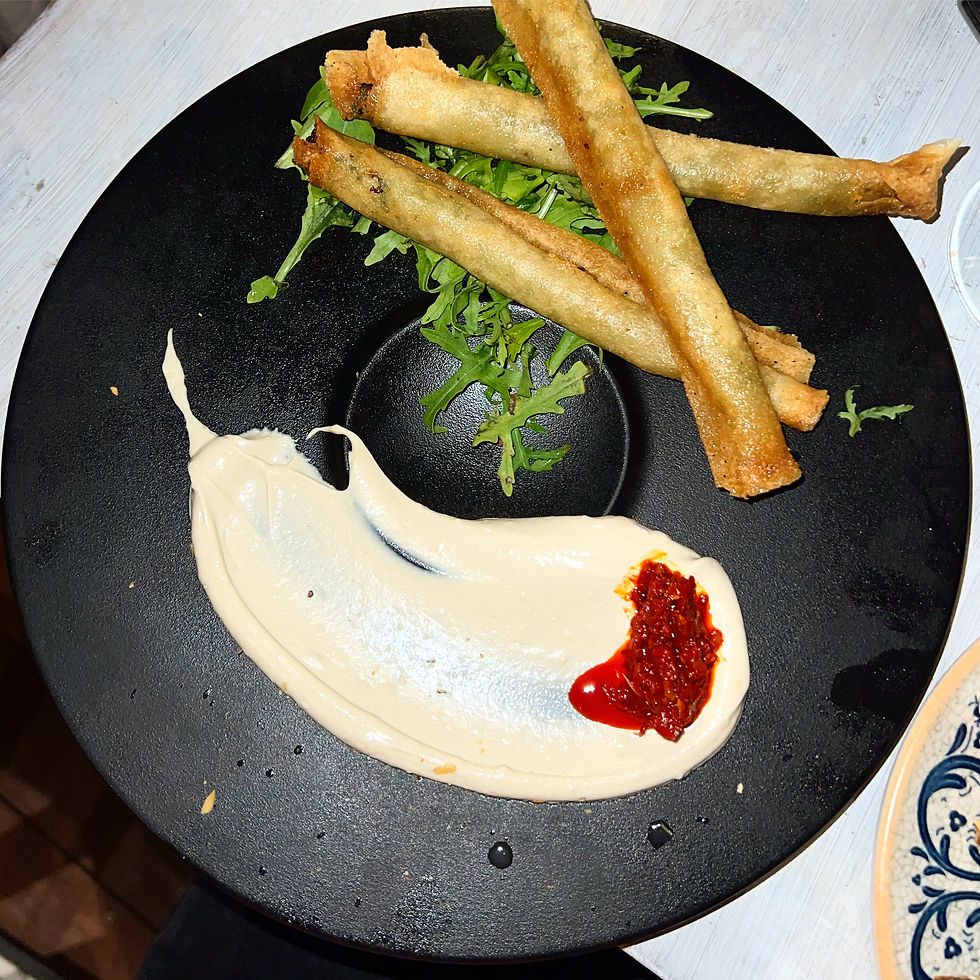Exploring The Tech: Gravel Bikes, Big Tyres & Ingenious Solutions At Paris-Roubaix 2025

Table of Contents
Gravel Bike Frame Geometry: Designed for the Cobblestones
The demands of Paris-Roubaix have driven significant innovation in gravel bike frame geometry. Modern designs prioritize comfort, control, and efficiency across varied terrain.
Increased Tyre Clearance
Wider tires are paramount for tackling the punishing cobblestones. Increased tire clearance allows riders to run larger volume tires, boosting comfort and grip.
- Examples: Many manufacturers now offer gravel frames with clearances exceeding 50mm, accommodating tires up to 55mm or even wider.
- Benefits: Wider tires provide superior traction on loose surfaces, enhancing stability at high speeds and reducing the risk of punctures. Increased volume also offers significantly improved vibration damping, leading to greater rider comfort over long distances.
- Popular Sizes: Tire sizes like 45mm, 47mm, and 50mm are gaining popularity among professional riders for their excellent balance of grip, comfort, and rolling resistance.
Improved Stiffness and Handling
Frame stiffness is crucial for efficient power transfer, yet excessive stiffness can lead to jarring vibrations on rough terrain. Modern gravel frames balance these conflicting requirements.
- Carbon Fiber Dominance: Carbon fiber remains the preferred material for its high strength-to-weight ratio and ability to be tuned for specific stiffness characteristics.
- Balanced Stiffness: Top-tier frames are designed for optimal stiffness in the bottom bracket and head tube areas for efficient pedaling and precise steering, while strategically placed compliance zones reduce vibrations.
- Geometry for Stability: Progressive geometry features like longer wheelbases and slacker head angles contribute to improved stability at high speeds, particularly on uneven surfaces.
Aerodynamics and Weight Optimization
While aerodynamic efficiency might seem secondary to comfort and control in Paris-Roubaix, weight optimization and reduced drag are still important considerations.
- Innovative Frame Shapes: Many gravel bike frames incorporate aerodynamic features like Kammtail tube shapes or truncated airfoil designs to minimize drag without sacrificing structural integrity.
- Lightweight Materials: The use of high-modulus carbon fiber and other lightweight materials helps reduce the overall weight of the bike, improving handling and rider fatigue.
- Integrated Cable Routing: Internal cable routing is becoming standard, minimizing drag and improving the bike's aesthetic appeal.
Tyre Technology: Grip, Comfort and Rolling Resistance
Tire technology is undergoing rapid development to meet the specific demands of Paris-Roubaix.
Tread Patterns and Rubber Compounds
The choice of tire tread and rubber compound significantly affects grip and rolling resistance.
- Tread Patterns: Tires for Paris-Roubaix typically feature a relatively aggressive tread pattern with closely spaced knobs for optimal grip on cobblestones, while still offering low rolling resistance on paved sections.
- Rubber Compounds: High-performance tires utilize advanced rubber compounds that provide exceptional grip in various conditions, without sacrificing puncture resistance and durability.
- Examples: Specialized, Vittoria, and Pirelli are just a few brands producing tires specifically designed for the challenges of cobblestone races.
Tubeless Technology and Pressure Optimization
Tubeless systems are increasingly popular for their benefits in puncture resistance and comfort.
- Puncture Resistance: The sealed tubeless setup eliminates the risk of pinch flats, a common occurrence on rough terrain.
- Lower Pressure: Tubeless allows riders to run lower tire pressures for enhanced comfort and grip without the risk of burping air.
- Pressure Optimization: Riders adjust tire pressure based on the specific section of the course, opting for higher pressure on smoother paved sections and lower pressure on the cobblestones.
Tire Size and Width: The Sweet Spot for Paris-Roubaix
Choosing the right tire size is a delicate balance between comfort, grip, and rolling resistance.
- Wider is Better (to a Point): The trend is towards wider tires, particularly in the 45-50mm range, offering better cushioning and grip.
- Rolling Resistance Trade-off: Wider tires generally have slightly higher rolling resistance compared to narrower tires, affecting speed on smoother sections.
- Optimal Size: The optimal tire size is determined by the rider's preferences and the specific conditions of the race, but wider tires are generally favored for Paris-Roubaix's rough terrain.
Ingenious Solutions: Beyond the Bike
Innovations extend beyond the bike itself to enhance rider performance and reduce fatigue.
Gear Technology and Drivetrain Innovations
Reliable shifting is crucial on uneven surfaces. Modern drivetrains are designed to handle the demands of Paris-Roubaix.
- Electronic Shifting: Electronic groupsets like Shimano Di2 and SRAM eTap offer precise and consistent shifting, even under stress.
- Wide-Range Cassettes: Cassettes with a wide gear range, such as 11-36t or even wider, provide riders with the necessary gearing for steep climbs and challenging sections.
- Chain Retention: Chain retention devices help to prevent the chain from dropping, a common problem on bumpy roads.
Suspension and Vibration Dampening
Reducing rider fatigue is paramount. Several technologies aim to minimize the impact of vibrations.
- Suspension Seatposts: Suspension seatposts absorb shocks and vibrations, improving rider comfort over long distances.
- Vibration-Dampening Handlebars: Specialized handlebars with vibration-dampening materials reduce fatigue in the hands and arms.
- Frame Design: Frame designs incorporating compliance features strategically placed throughout the frame also help absorb vibrations.
Data Analytics and Rider Performance
Data plays an increasingly important role in optimizing rider performance.
- Power Meters: Power meters provide precise data on rider output, enabling them to manage their effort effectively.
- GPS Tracking: GPS trackers provide detailed information about speed, distance, and elevation, helping riders strategize their race.
- Physiological Monitoring: Heart rate monitors and other physiological sensors provide valuable insights into rider fatigue and performance.
Conclusion: The Future of Gravel Bike Technology at Paris-Roubaix
The evolution of gravel bikes, big tyres & ingenious solutions is transforming Paris-Roubaix. Increased tire clearance, improved frame designs, advanced tire technology, and innovative drivetrain and suspension systems are all contributing to enhanced rider performance and comfort. As technology continues to advance, we can expect to see even more sophisticated solutions impacting the race in the years to come. Stay ahead of the curve in gravel bike technology – explore the latest innovations impacting the world of professional cycling and prepare for your next adventure!

Featured Posts
-
 La Lutte Contre L Iptv Les Strategies De La Rtbf Et Rtl Belgium
May 26, 2025
La Lutte Contre L Iptv Les Strategies De La Rtbf Et Rtl Belgium
May 26, 2025 -
 Ardisson Et Baffie Une Brouille Durable Con Et Machiste Accusations Recurrentes
May 26, 2025
Ardisson Et Baffie Une Brouille Durable Con Et Machiste Accusations Recurrentes
May 26, 2025 -
 La Vie De Famille De Melanie Thierry Et Raphael Trois Enfants Trois Approches Parentales
May 26, 2025
La Vie De Famille De Melanie Thierry Et Raphael Trois Enfants Trois Approches Parentales
May 26, 2025 -
 Eddie Jordan Ha Fallecido Ultima Hora
May 26, 2025
Eddie Jordan Ha Fallecido Ultima Hora
May 26, 2025 -
 Salon Yevani Restaurant Review A Jerusalem Post Perspective
May 26, 2025
Salon Yevani Restaurant Review A Jerusalem Post Perspective
May 26, 2025
